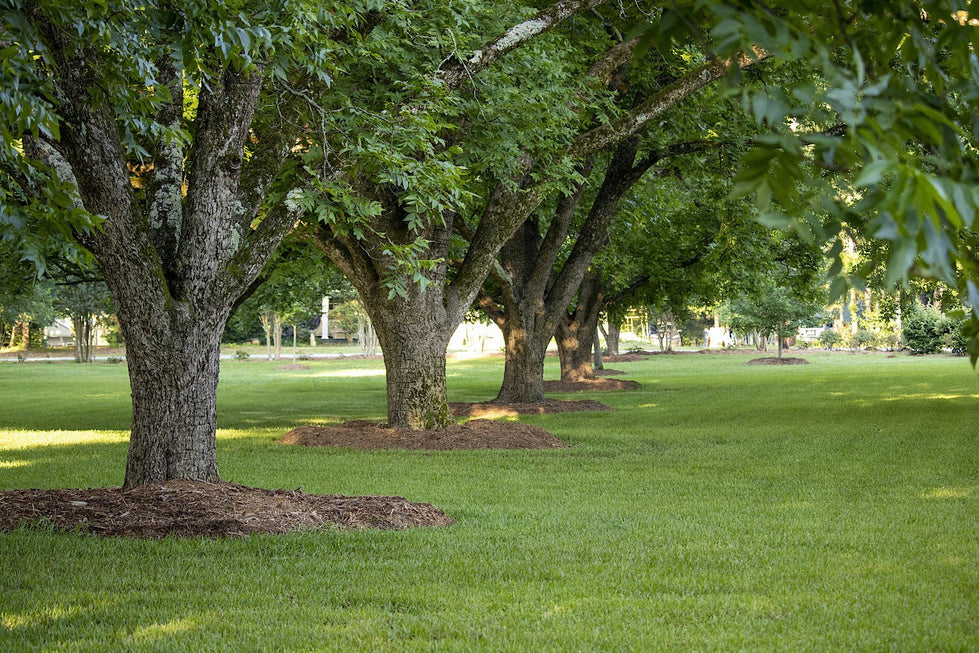
J. R. VESTAL
Suervisor, Foods Trade Program
Consumer and Marketing Service
Dallas, Texas
THANK YOU MR. CHAIRMAN. Thank you ladies and gentlemen, for inviting me to attend your annual meeting. It is a pleasure for me to be here today, and I am pleased to have this opportunity to tell you briefly about the Plentiful Foods Program and to give some of the highlights of the recent industry-government promotion on pecans.
Perhaps some of you will be hearing about this program for the first time; others of you no doubt know something about it, and still others of you have worked closely with us in various promotions over the years; thus you know us pretty well. For those of you who do not know us too well, I hope the discussion for the next little while will be enlightening; for our old friends here, I hope that I can bring you a current picture of our over-all operation.
Program to Help Producer and Industry
First, let me say the purpose of this program is to help the farmer, producer and industry to find a market for production, and to increase the movement ot foods in plentiful supply through normal channels of trade.
Let's face it, ladies and gentlemen, if we can focus the attention of the family and large-scale food buyers on plentiful foods, what happens-sales increase there- by avoiding useless waste and at the same time it helps stabilize prices.
Many people have asked me to describe the activities of this program in one word, and as yet I have not found any that does the job as well as “limelighters,” for indeed, the goal of this program is accomplished by placing in the “limelight” those foods in such abundant supply that they need marketing assistance, if they are to be moved through normal channels of trade.
It is not always easy to get the consumer's attention directed toward one particular food. Just stop and think a minute about the kind of competition we have in the supermarket today. Did you know that the average supermarket offers some 7,000 to 8,000 items, each one trying for the consumer's attention? So, you can see what a job we have when foods face marketing difficulties.
“Pecans, please”---are two little words which contain but a dozen letters; yet, during the recent special plentiful foods program conducted nation-wide on behalf of pecans, they spelled SUCCESS.
The All-American Nut
The story you are about to hear is a Consumer and Marketing Service story. It's about pecans and how this all-American nut became the center of attention in 1965.
The 1965 pecan crop covered the nation with its 264 million pounds. Yet within a few months the nation ate its way through this abundance. Pecan producers and processors had to work overtime keeping grocers’ shelves filled to meet consumer demand for pecans. How could so much of one food move so rapidly from tree to table? Because of the combined efforts of the Pecan Industry and the Consumer and Marketing Service of USDA. They joined forces and launched a promotion which captured the enthusiastic support of the entire food distribution industry.
In June 1965 the Pecan Industry was faced with the second largest crop on record waiting to be harvested and added to large carryover stocks. Industry leaders expected to be swimming in pecans once the harvest got underway.
Department of Agriculture was asked to purchase pecans as a surplus removal activity using Section 32 funds. One and a half million pounds of large-size pecan pieces were purchased and distributed to schools.
While this sounds like a lot of pecans, on an average, it provided only 1 tablespoon of pecans for each of the 18 million children participating in non-profit School Lunch Programs. This was just enough to make them hungry for more. School lunch managers purchased additional pecans locally. A special USDA Fact Sheet provided the managers with many ideas for using pecans.
Plentiful Foods Program
The Department's part of the promotion was handled by the Food Trades Staff which operates the Plentiful Foods Program. Food tradesmen, located in Washing- ton, 5 area offices and over 80 field offices, were alerted to the pecan situation and immediately set to work. They participated in planning sessions throughout the summer with industry representatives and the Department's information specialists. Get-togethers included the meeting of the National Pecan Council in New Orleans, and the Texas Pecan Growers Association conference. All phases of the promotion were clearly outlined and assigned.
October was kick-off month and the promotion peaked during the holiday season. Knowing personal contacts are the key to successful promotion, the food tradesmen put on their walking shoes and personally contacted industry leaders. Approximately 83,000 Fact Sheets went to food distributors, and provided them with the merchandising hints for pecans. The food service Fact Sheet included menu ideas using pecans. Over 55,000 copies were issued. Thirty-five thousand Fact Sheets went to the baking trade with merchandising ideas and recipe suggestions.
Pecans were included on the Department's Plentiful Foods List for October, December and January. Over 47,000 bulletins are issued monthly, 26,000 for the distributive trades and over 21,000 for the food service industry. Pecans were featured in December and January, the peak promotion months. Pecans were included in the Advance Food Service Story going to trade magazines with early publication deadlines. Food and Home Notes carried the pecan story to 6,000 women's and food editors during December.
The Pecan Industry offered its fullest cooperation. The National Pecan Council rallied industry members behind the promotion.
The National Pecan Shellers and Processors Association supplied special articles to trade magazines. The Candy Industry Journal published an article titled "Pecan Utilization Widens in Quality Confections.”
The baking industry included a pull-out section with formulas and photo- graphs showing how "Pecans Highlight Holiday Specials.”
Two point-of-sale pieces were provided by the industry. Thirty-thousands of each were made available to retailers, bakers and food service operators. The Industry sent a wealth of photo-recipe releases to food editors, provided television materials, and furnished information kits to the media and other promotion cooperators.
Growers Join Promotion Effort
The Texas Pecan Growers Association presented pecans to the mayor of Dallas and to the City Council. All of these industry and government activities received widespread coverage in the press, and allied groups quickly joined the pecan promotion bandwagon. The Pie Filling Institute added pecans to the fruit pie fillings it promoted. The California Prune Advisory Board contacted the National Pecan Council regarding additional prune-pecan tie-ins after seeing the prune and pecan cake recipe in the Food Service Fact Sheet.
The Bureau of Commercial Fisheries of the U. S. Department of Interior printed 150,000 copies of this recipe folder. Copies were sent to food editors. Radio and TV food shows offered them to their audiences. Grocers used the recipes in their newspaper ads.
At the State Fair of Texas, 75,000 copies were distributed.
Two new pecan products were introduced on the market. Rubenstein Foods in Dallas offered Gulf Princess Pecan Breaded Shrimp. Local grocers immediately stocked the item and restaurants added it to their menus.
Pet Milk Company used pecans in its evaporated milk ads in newspapers and on car cards in public transit vehicles. Evaporated Milk Association included pecans in food editor releases.
Dairy foods and pecans also go together in a recipe booklet from Bordens and in the monthly bulletin of the Sanitary Milk Producers’ Association. The American Institute of Baking included pecans in its holiday releases Texas Bakers’ Council was active in this program. And a bakery in Fort Worth, Texas, developed four new pecan-baked goods after hearing that pecans were plentiful. They purchased 44,000 pounds of pecans in 1965, compared with 9,000 pounds in 1964.
Utility companies from Texas to New York State publicized pecans in bulletins and tabloids sent to their customers. Wholesalers in this country and Canada sent the Department's Fact Sheets and the industry's point-or-sale pieces to their customers. Many wholesalers offered special pecan purchase deals.
Pecans Glamourized
The food service industry took advantage of the glamour and versatility of pecans for holiday menus. Nation al trade publications urged greater use of pecans. Restaurant associations gave good coverage to the pecan promotion.
Chef’s, too, joined the pecan bandwagon. The chef of the Statler-Hilton in Dallas cooperated enthusiastically when contacted by food tradesmen. He prepared eight dishes using pecans and provided recipes to food editors. Copies also were distributed at the Texas Sta te Fair. At the Fair, pecans were a winner. They filled the pie that took first prize in the Favorite Recipe Contest. Pecans received lots of other attention, too, thanks to the Texas Pecan Growers Association.
Christmas decorations in a Dallas shopping center included four reindeer made with 14,200 pecans and 6,000 raisins. A department store in Fort Worth sent 300 2½-pound boxes of pecans to local men serving in Viet Nam. Extension consumer marketing specialists appeared on many radio and T'V shows on behalf of pecans. Several prepared films for educational TV stations.
Many articles had been supplied by the Department. Others had been furnished by the Pecan Industry. But they were all designed to make Mrs. Homemaker and her family hungry for pecans.
Food distributors cooperated wholeheartedly and made pecans a good buy for consumers. National trade associations such as the Super Market Institute reproduced the text from the Department's Fact Sheets in their own bulletins.
State grocer associations publicized pecans in monthly magazines. One chain store alerted its 2,000 units nationwide with special flyers and the Department's Fact Sheets. There was no need for grocers to shout about their pecan features. Their countless newspaper ads carried the message very well.
Mrs. Homemaker was consistently urged to include pecans and pecan products on her shopping list. And when Mrs. Homemaker reached the store, special pecan displays greeted her and made her shopping easier.
It was unanimously agreed that the pecan crop was big, but the combined industry-government effort was bigger, and proved to be an effective way to move such an abundant crop. Through your planning, your cooperation and lots of hard work, this promotion was a success.

